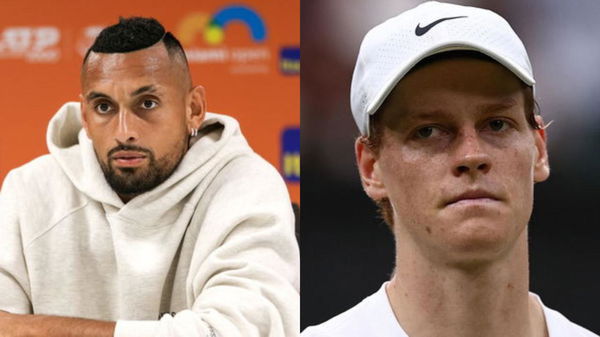

The scenario of Jannik Sinner’s Cincinnati win should have played out like a picture-perfect script. He played great tennis and made a winning comeback right before the last Grand Slam of the season. And the World No.1 should have been busy celebrating his win and preparing to claim the upcoming US Open. However, there is a slight change in the script and a massive change in the circuit atmosphere, as the news of his failed doping tests at the Indian Wells and a favorable subsequent judgment marred the celebration. Just one question plagues everyone’s mind, including the Aussie star Nick Kyrgios: How was Sinner awarded a favorable judgment?
Sinner tested for a banned anabolic substance, clostebol, back in March. However, the tennis circuit was not made aware of this failure then. Fast-forward to August, the ruling by ITIA declared, “An independent tribunal has ruled ‘No Fault or Negligence’ in the case of Italian tennis player Jannik Sinner.” This ruling shadowed Sinner’s Cincinnati win, as everyone is still wondering about the origin of this bombshell. And Kyrgios has something to say about the controversial ruling: “Ridiculous”
Kyrgios took to X, expressing his disappointment with how they handled Sinner’s doping trial: keeping it shrouded in secrecy! The Australian tennis star feels that the authorities should not have allowed Sinner to play in the circuit after failing the test twice. He said, “Ridiculous – whether it was accidental or planned. You get tested twice with a banned (steroid) substance… you should be gone for 2 years. Your performance was enhanced. Massage cream…. Yeah, nice 🙄”
ADVERTISEMENT
Article continues below this ad
Every player has the right to challenge the positive dope test and appear for another test to ensure fairness. But while Sinner faced a provisional ban following the initial findings, which was lifted after an appeal to the Independent Tribunal, none of this information was in the public domain. There was no mention of the steps taken by the authority in the form of a provisional ban on the player, stripping him of the prize money and the ranking points earned at Indian Wells.
Ridiculous – whether it was accidental or planned. You get tested twice with a banned (steroid) substance… you should be gone for 2 years. Your performance was enhanced. Massage cream…. Yeah nice 🙄 https://t.co/13qR0F9nH2
— Nicholas Kyrgios (@NickKyrgios) August 20, 2024
All this has contributed to suspicions around the trial. Kyrgios questioned Sinner’s defense of steroids being transmitted through a spray. He remarked, “Accidental? You truly believe that the physio rubbed physio cream onto a cut that made him fail 2 anabolic steroid tests. C’mon potato.”
ADVERTISEMENT
Article continues below this ad
This doping controversy could leave a black dot on Sinner’s illustrious career. It’s not the first time that a tennis player has tested positive for a prohibited substance. But for the first time, the trial was kept away from the public for such a long time!
What’s your perspective on:
Is Nick Kyrgios right about Jannik Sinner and ITIA's doping bias, or is he just stirring the pot?
Have an interesting take?
Jannik Sinner’s trial marks a break from the conventional path undertaken by players after a positive doping test
Jannik Sinner isn’t the first athlete to test positive for the prohibited substance. A few tennis players have taken the dark road, knowingly or unknowingly. However, none of them had the luxury of escaping the wrath of tennis fans, be it the famous Andre Agassi, Maria Sharapova, or Simona Halep. The latest doping case involving Halep was brought into the public eye from the get-go, with every step being revealed.
ADVERTISEMENT
Article continues below this ad
The tennis circuit became aware from the moment Halep and Sharapova tested positive. Followed by their subsequent provisional ban and their fights against the allegations. Authorities imposed a ban of 2 years on Sharapova, while Halep was cleared of the charges in March and is expected to make a return soon.
However, these trials weren’t behind closed doors, as was the case with Sinner. His first positive test was not made public, and they did not disclose the subsequent challenge and the ensuing proceeding, which was a contrasting way of dealing with the doping tests. It certainly marks a break from the usual way of proceedings. Would this be followed in the future? What do you think?
ADVERTISEMENT
ADVERTISEMENT
ADVERTISEMENT
ADVERTISEMENT


Is Nick Kyrgios right about Jannik Sinner and ITIA's doping bias, or is he just stirring the pot?